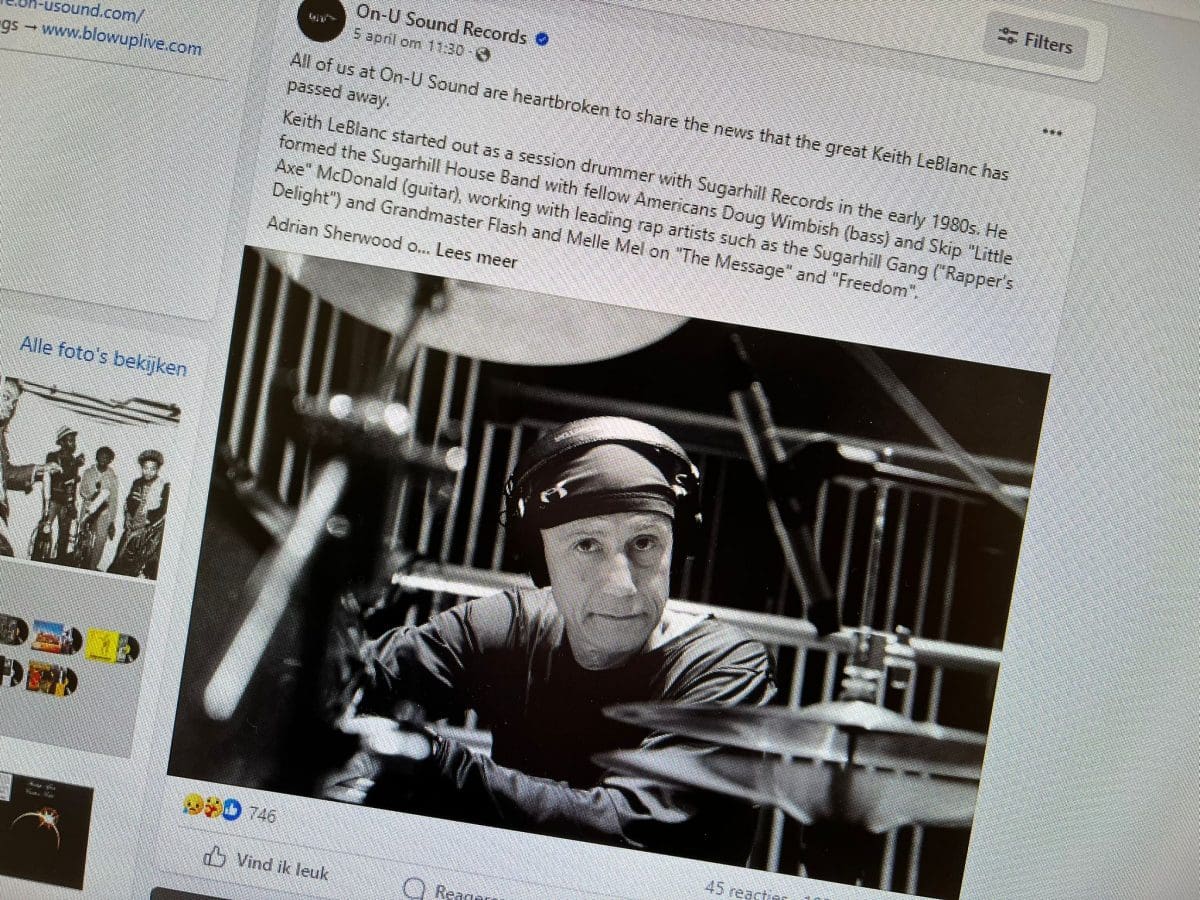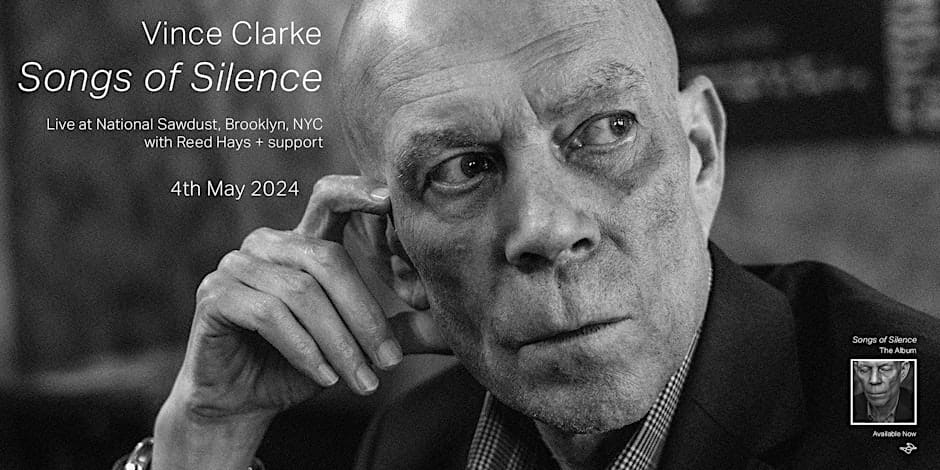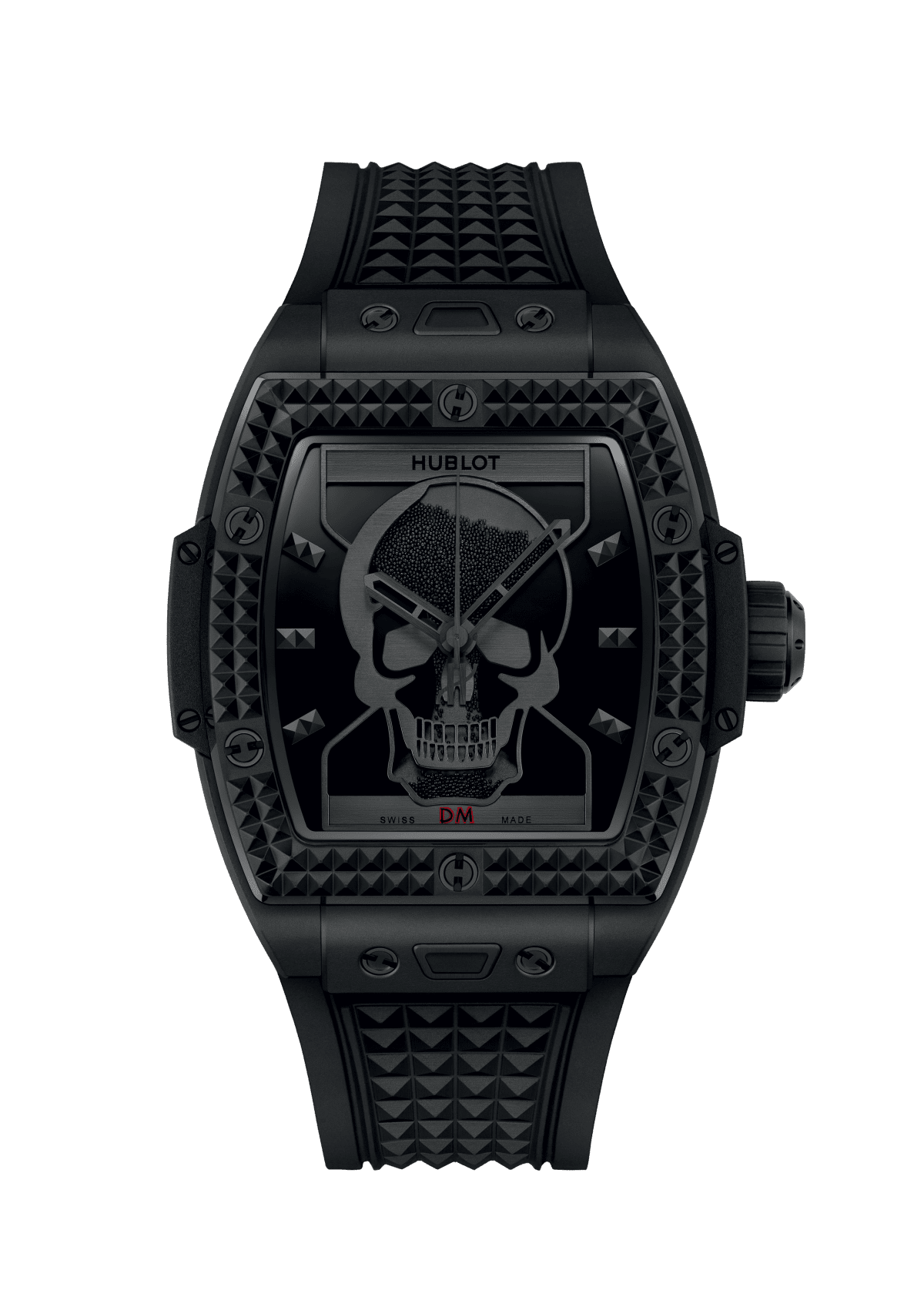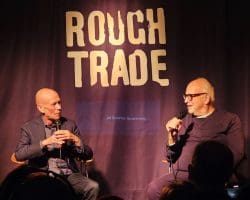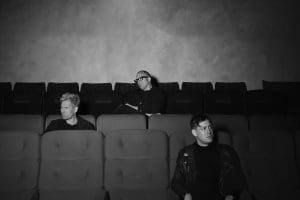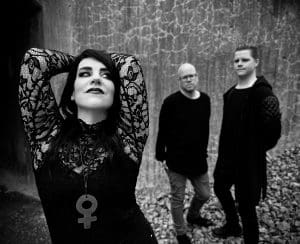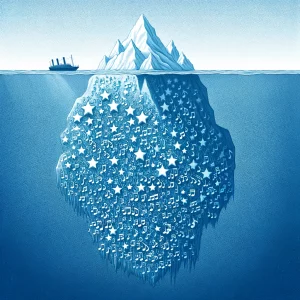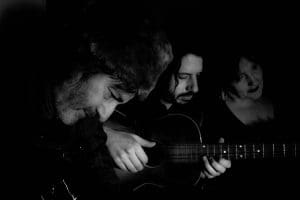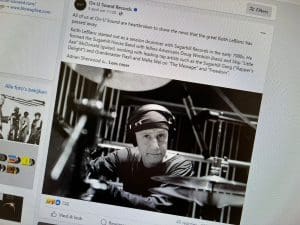Interview with Erasure ‘s Vince Clarke, Mark Saunders and Gareth Jones on re-release ‘Wild!’ LP
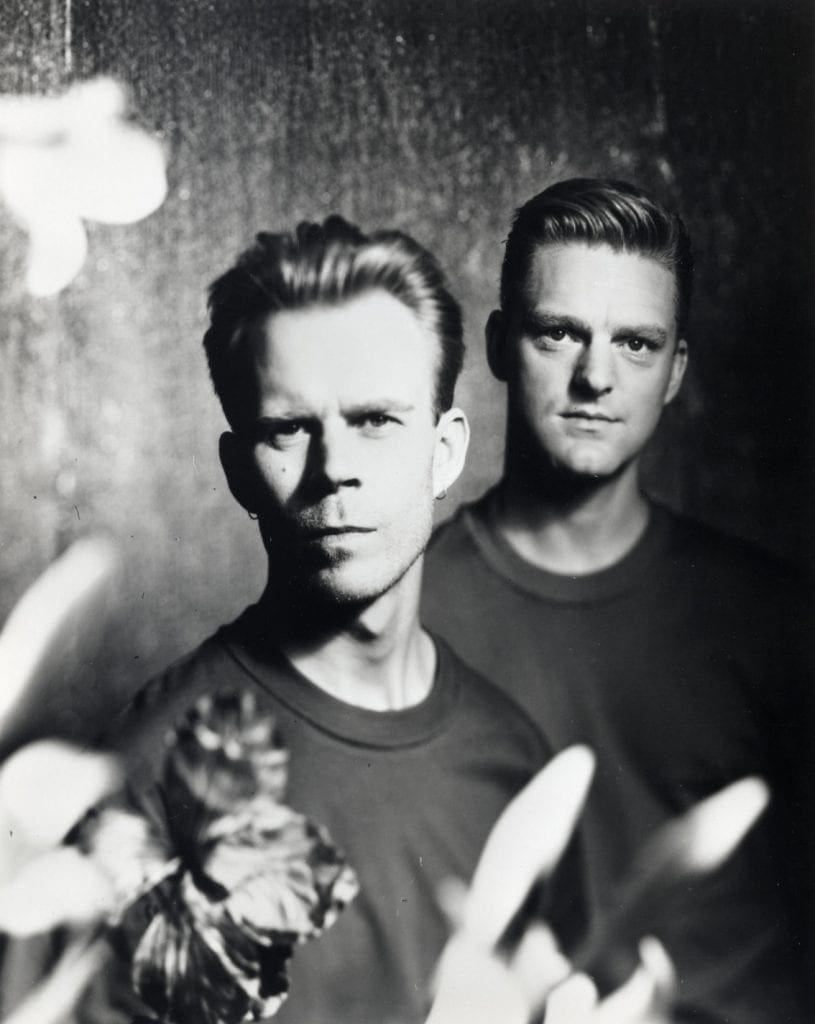

(Interview © Janos Janurik) 2019 is a year full of anniversaries and anniversary releases and tours, just think of bands and records or special concerts such as Alphaville (“Forever Young” (Super-Deluxe-Box)), the anniversary tour to A-ha`s debut album “Hunting High And Low”, special live performances of The Cure to their legendary “Disintegration” album – just to name a few…
This series is complemented by the re-release of Erasure’s “Wild!” LP. The album was originally released in October 1989 and put the duo of Vince Clarke and Andy Bell on the top of the charts. According to Erasure’s fan base this record is still one of their best and contains timeless classics like “Drama!”, “You Surround Me”, or “Blue Savannah”, which are still part of their concerts.
To celebrate the 30th anniversary of “Wild!”, our contributor, Janos Janurik, invited three people involved in that project for an interview: the unique and unrepeatable Vince Clarke and his right hands, who also have a good reputation among Depeche Mode fans: the two producers, Gareth Jones and Mark Saunders.
They were all ready for a discussion and answered the questions of our colleague as follows.


Vince Clarke
SL: In the series of the Mute album re-releases the last Erasure LP of the eighties, “Wild! ” will be published on the occasion of its thirtieth anniversary. Which (not only musical) memories of the autumn of 1989 are still awake in you?
VC: – I remember the music was recorded in my very first home studio in London. Mark Saunders worked with me whilst Andy recorded with Gareth Jones at the ‘Church’ studio.
SL: The producer of this album was Gareth Jones, a long-time studio employee of Mute Records artists like Depeche Mode, Wire, and Nick Cave. His partner in the production team was the legendary mix master Mark Saunders. You worked together with Gareth on other Erasure albums. Which cooperation do you remember best? Do you have a favourite remix of Mark’s Erasure catalogue?
VC: – Mark did a fantastic remix of ‘You Surround Me’. He was/is very easy going and we got on well. At that point I didn’t really know Gareth.
SL: The single releases “Drama!” and “Blue Savannah” are still fix parts of your live setlists. On the Violet Flame Tour you performed remixes of the rarely played “Wild! ” singles “Star” and “You Surround Me”. Except “2000 Miles” you actually played all album songs at your previous concerts. Are you still satisfied with this material? How do you rate this album after 30 years of time?
VC: – Not bad. 🙂
SL: The “Wild! Tour” has perhaps been the biggest of your tours so far. You toured the world with a gigantic stage set. For the first time you had dancers on stage besides the background singers and there were also several costume changes and two different setlists. During this tour you also played live behind the iron curtain in Prague and then in exotic places like South America, Japan and Australia for the first time. Not to mention the legendary finale at the Milton Keynes Bowl. Do you have any special souvenirs from this tour that will bring back good memories?
VC: – I don’t have any souvenirs, but I remember that the tour was very exciting, especially play to such big crowds.
SL: The second disc of the forthcoming re-release will feature 14 bonus B-sides, remixes, rarities and live recordings, five of which are previously unreleased, including a brand-new remix of “Drama!” by Richard Norris and a recently discovered unreleased mix of “How Many Times?”. This song is my favourite song from the album and which one is yours?
VC: – “Blue Savannah”.
SL: But Erasure is not a nostalgia band of the 80s, because in the meantime you have released more than a dozen albums that have all been received positively – by fans as well as critics. What does the band-future of Erasure look like? Are there any plans for new material yet?
VC: – We hope to be writing for a new album in 2019.
SL: What would your message be for your fan base?
VC: – THANK YOU!
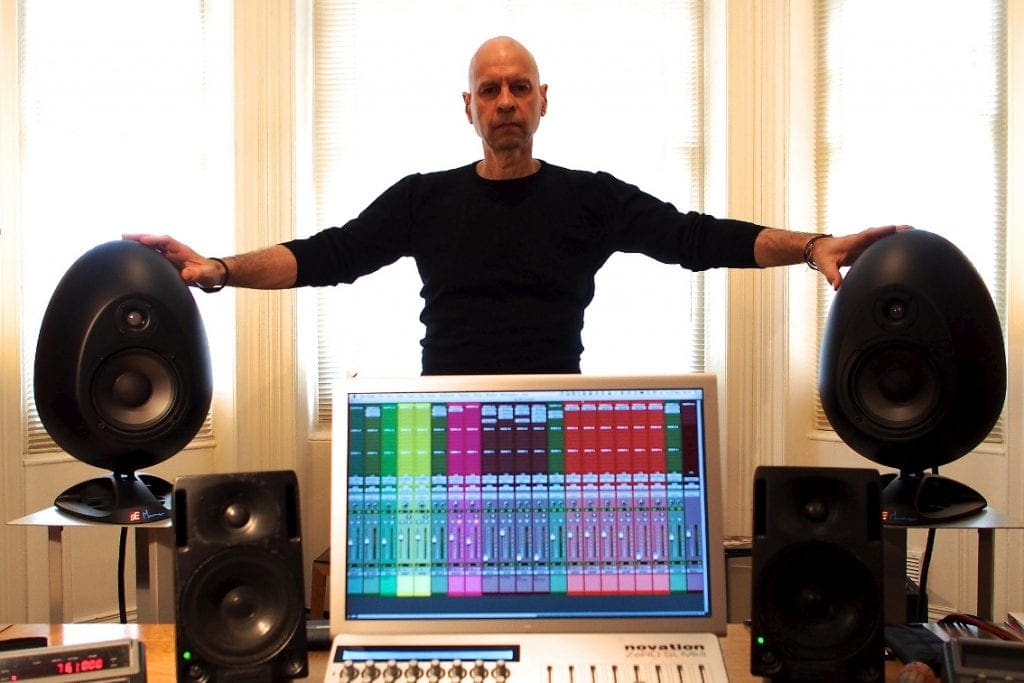

Gareth Jones
SL: Gareth, you’re supposed to be the in-house producer for Mute Records. Before working with Erasure, you’ve worked with renowned Mute artists such as Depeche Mode, Wire and Nick Cave. How do you remember the first meeting with label boss Daniel Miller and the studio work in Berlin with Depeche Mode on their „Construction Time Again” album?
GJ: – I have told this story many times, so I will keep it brief.
I was introduced to Daniel Miller and Depeche Mode by my friend and mentor John Foxx. He owned a studio called “The Garden” in Shoreditch in East London, and Daniel and Depeche Mode were interested in recording there. I was working for John at the time and he sent me over to the MUTE Records office, which at that time was in Kensington Gardens Square in West London, to meet the whole team. I was a bit nervous, but they were all super nice and normal people, and agreeably weird. Luckily for me they felt good about me too, and offered me the job.
SL: How did the request to produce Erasure’s „Wild!” album come about? Have you had contact with Vince Clarke and Andy Bell before?
GJ: – Before we started working on the “Wild” album I didn’t know Vince or Andy very well at all. For this record they had decided to make sure that there was plenty of time for Andy to work on his vocals. They were looking for someone to engineer and produce the vocals. I had already been working in Berlin with the incredibly talented Diamanda Galas. She had met Andy a couple of times I believe (I don’t know where) and she was kind enough to recommend my vocal production skills to him. So that is how I join the team.
SL: How was it working with them compared to Depeche Mode?
GJ: – This was a very different process from working with Depeche Mode. Initially I was hired to record and produce Andy’s vocals. Vince was in another studio with the other co-producer of the record, Mark Saunders. We were in the church studio and I think Mark and Vince were in Swing Studios.
The studios were both in North London so we were able to have meetings often, and we were continually exchanging musical and vocal ideas.
When it came to mixing it was decided that Mark and I would both mix the album. I was mixing in the Church and Mark was mixing in Konk. We were all determined to get the best out of the songs, so we all pushed each other to do our best like a Sound System contest.
I remember the first single “Drama!” went back and forth between our two studios a few times! Eventually we were all happy.
SL: Are there any favourites from this album that you are still proud of today?
GJ: – The whole record was an amazing experience. Vince and Andy are such strong song writers, talented musicians and all around wonderful people that it was a real pleasure and privilege to be a part of this great record.
I loved the whole process and I have a special affection for “Drama!” and” Blue Savannah”.
SL: You were not only involved in the „Wild!” project as a producer, but also as a remixer, for example the „Syrinx Mix” from „You Surround Me”, which is one of my favourites. Do you have a favourite remix from Erasure`s discography that you particularly enjoyed working on?
GJ: – I did 2 remixes of “Blue Savannah” (“Der Deutsche Mix 1 & 2”) in Berlin with my friends Sun Electric – Stephan Fisher, Max Loderbauer and Tom Thiel. I really enjoyed this – they are all so musical, creative and professional. It was truly a fantastic experience.
SL: After the „Wild!” album you had numerous co-productions with Erasure – among them you worked on one of my favourite albums from them, on the self-titled „Erasure”. And how about you? Do you have a favourite album from Erasure?
GJ: – The first album, “Wild!”, is dear to my heart. I also love the “Erasure” album. It was such a pleasure to work with my friend Thomas Fehlmann as a co-producer on the album and he bought so much to the table. I was so happy that Diamanda agreed to do a guest vocal on the record. We also had the pleasure of an amazing LP mix by Francois Kevorkian.
– The „Wild!” album also included an extensive world tour. Did you see Erasure live back then? If so, where? What did you think of them as a live act?
GJ: – I saw the Wild tour in Hamburg I think. I invited my parents to come along. The show was incredible. I am always impressed by Erasure live shows. The love between the band and the audience is so tangible and touching. Andy is an outrageously talented frontperson, and Vince is always Mr Cool. What a great combination!
SL: What are you currently working on and what are your plans for the future?
GJ: – I am currently writing and recording a solo electronic music project and a new collaboration that I am very excited about.
This year I will also be writing and releasing a new LP for the “Spiritual Friendship” project – an ongoing collaboration with the amazing Nick Hook.
I am also producing an exciting and enjoyably weird electronic pop album with American and European musicians for a new project called “Of Love And Lust”.
I will be back in Yann Tiersen’s fantastic new studio on the island of Ushant (Ouessant) later in the year, helping out with a new recording.
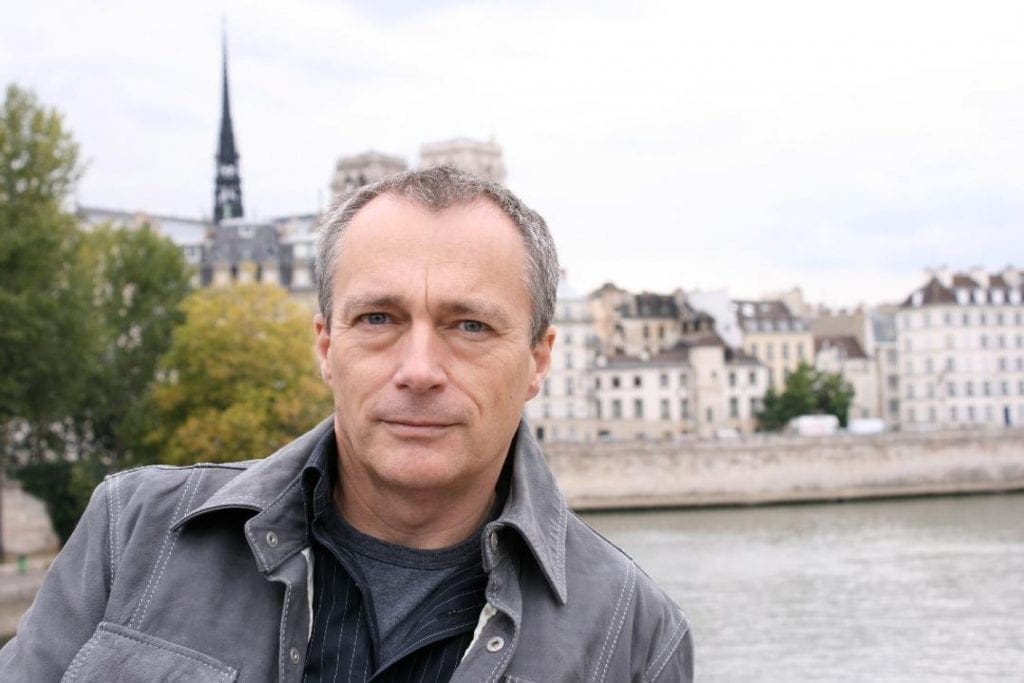

Mark Saunders
SL: Among your early outstanding works is the engineering of some of David Bowie’s songs from 1985 and 1986, who was the idol of several generations of musicians, including Erasure’s Vince Clarke. How do you remember this studio work?
MS: – I feel incredibly lucky to have been in a studio to witness the true legend, David Bowie at work. It was just under a year from starting at West Side Studios in London when Bowie first came in to work on songs for the movie that he was also acting in – „Absolute Beginners”. Before that, I’d been making demos on a Tascam 8-Track tape machine in a dilapidated cow shed on my dad’s farm. Working with Bowie was an unfathomable step up! When the Bowie sessions started, I was transitioning from assistant engineer to house engineer. My bosses, producers Clive Langer and Alan Winstanley (Madness, China Crisis, Elvis Costello, Bush, Bowie & Jagger), were constantly throwing me in the deep end on sessions. There were quite a lot of jazz songs that we recorded for the Absolute Beginners soundtrack were and there would often be drums, bass, piano, guitar, and sometimes up to 9 brass players all playing together in the studio. It was intense as a newbie engineer to get thrown in on those sessions. I remember one session feeling somewhat overwhelmed and turning around to my boss Alan to get some confirmation that I was doing ok and he was asleep on the sofa behind me! For Bowie’s songs for the soundtrack, when the band were laying down the backing track for Bowie to sing on, Bowie would always sing along a ‘rough’ vocal to keep the band inspired. His vocals were always brilliant and as far as I was concerned, nearly every one could have been the master vocal take. But surprisingly, when Bowie was happy with the backing track, he would approach singing lead vocals in quite a clinical way. He would often sing one line, stop, and listen back to it before moving on to the next line. He would also quite regularly check his vocal on the demo version of the song to during this process. His vocals always sounded fantastic though. The pinnacle of those Bowie sessions was when on one day, we recorded the epic title track „Absolute Beginners” and then late in the afternoon, Mick Jagger came in to record „Dancing In The Street” for Live Aid! This was incredible for me – this was a year and one day from starting in a professional studio – and I was working with Bowie & Jagger! This being before cellphones and frustratingly, I had no way to text friends and say – „You’ll never guess who I’m working with today!”. „Dancing In The Street” was one of the first records I ever got an engineering credit on.
SL:Erasure are part of the success story of Mute Records. Your first commissions with the record company included remixes of Depeche Mode`s „Strangelove” and „Everything Counts”. These tracks are – after 30 years – still firm parts of the Depeche Mode club evenings. Did you like making them (with Tim Simenon)?
MS: – I think that these remixes occurred just after or around the time that I worked with Tim on Neneh Cherry’s brilliant debut album „Raw Like Sushi”. Tim was great to work with, he was young and came from the DJ-ing aspect of music rather than being a studio musician or an engineer and he had a naive (in a good way) approach to making records that kept things moving along and fresh sounding – particularly noticeable on „Buffalo Stance” by Neneh Cherry – her first hit. The „Everything Counts” Depeche remix was a pretty simple affair. I seemed to remember hiring in a Roland SH-01 for that session which was definitely used for the bass. Personally I would have preferred to have made the remix more musical – but Tim was happy to keep it more of a hardcore club track. Our Strangelove remix was much more complicated and fraught with technical difficulties.
In those days I was syncing my Atari 1040st computer, running Cubase, to a timecode track (SMPTE) which was recorded on one track of the multitrack tape that contained the song.
This quite often lead to difficulties because after hours or playing and rewinding the tape, the tape would start to wear out. Usually the code track was on the edge of the tape and the edges wore out faster.
So as it go late into the night, we had real problems syncing the computer to the tape machine. And the computer was running all the new parts and samples that Tim and I were adding for the remix. I think this one turned out pretty well though!
SL: Before the release of “Wild!” you also made remixes for Erasure songs like „A Little Respect”, „Stop!” and „Knocking On Your Door”. Did you follow the band`s history from the very beginning?
MS: – I’d been a fan of Vince since the early Depeche days and the Yazoo era but I missed the early Erasure days. My first Erasure work was a remix of „A Little Respect”. I’m sure this came about because of my work for Tim Simenon who was signed to Rhythm King records which was based out of Mute’s offices. I didn’t meet the band though until I mixed the „Crackers International EP” which included the songs „Stop!”, „Knocking On Your Door”, „God Rest Ye Merry Gentleman” and – my favourite – „The Hardest Part”. I mixed „The Hardest Part” first and that was the first time I met Vince – when he came in to check the mix. I was nervous and nobody had warned me about his very dry, deadpan sense of humour. For one thing, when he listened to the mix, he barely moved. He barely even seemed to blink! He didn’t tap his feet, smile or turn around to me to give me an assuring look – nothing! He sat like a robot with his head between the speakers. I took this as a sign that he must absolutely hate the mix – I was literally pacing back and forth behind him wondering how I’d got the mix so horribly wrong! Eventually the song finished, Vince stopped the tape and then paused for what felt like an eternity before turning around and saying „I love it!” And then with a dead straight face he said – „Just one thing… Did you not like like the kick drum?” My heart nearly stopped! Had I really missed out the entire kick drum track on an Erasure record! But before I had a chance to respond, he said „Just kidding… there’s no kick drum on this song!”
SL: In 1989, Erasure`s „Wild!” album was released that still belongs to the fans’ favourites and includes such classics as „Drama!” and „Blue Savannah”. What memories can you recall of these studio works with Erasure?
MS: – As Erasure had time constraints for the making of „Wild!”, I was hired to co-produce the tracks with Vince Clark and Gareth Jones (Depeche Mode, Wire, Nick Cave And The Bad Seeds, Interpol) was hired to work on vocals with Andy. When Vince and I finished a track in his basement studio in his house in Notting Hill, London, the multitrack would be whisked off to The Church studios in Crouch End in the north end of London for Andy to sing on. On the first day of the recording, Vince sat me down and said – in his deadpan way, „Do you want to know how much money you’re going to make from this album?” Before I could utter much more than „Oh… well… err”, he’d tapped away on a calculator for a few seconds and was holding up the resulting calculation to show me and said „How’s that?” To which I gulped and said „Err… that looks just fine… thanks.” Vince’s basement studio contained nearly every great synth known to man and it was beautifully laid out, with a mixing board against one wall facing the window, and the other three walls had floor to ceiling racks laden with all the synths. One thing completely stunned me on day one though. We decided on what song to start with and Vince then proceeded to expertly get a kick drum sound from one of his synths – an ARP 2500 I think. When he was happy with it, he said, „OK let’s print that to tape (an Otari 24 track 2in Tape machine)”. I said „Are you sure you want to record it now?” He frowned and said „Why not?”.
I said, „Well, wouldn’t you prefer to hear the kick drum in context with a bass and maybe a couple of synths before you commit it to tape?” He still looked completely baffled – like I was asking him to pilot a space craft to the moon or something else outside of his comfort zone.
He replied „But this is the way I’ve always done it.” – which is a fair response from someone whose already produced a shed load of mega hits! „OK”, I said, „but surely, you have more than enough excellent gear here to have all the parts running live from your sequencer and refine all the sounds in context with each other before we need to commit to tape – right?” Long pause and more deep frowning – followed by „I’ve never thought about doing it like that”. This blew me away! This was Vince Clarke, the guy that I watched on Tomorrow’s World many years before I got into the music biz explaining how the Fairlight could sample sounds and play them musically on a keyboard and then sequence them to create a song – all inside a massive computer. Ground breaking stuff! And yet here was the same guy who hadn’t thought of running multiple parts on his sequencer before! Anyway, luckily, rather than kick me out of his studio, Vince gave my suggestion a go and after a couple of hours he said „I like this way of doing it…” and so that’s how we worked from then on. Vince is a musical genius and I loved working with him. He was all about keeping stuff dead simple and keeping songs short… He would quite often say „That’ll do”, like a builder who’s just skimped on the bolts holding some majorly important steel beams together. An example of the Vince Clark genius was the rising and descending piano riffs in „Blue Savannah”. Vince, during the programming/recording said „This needs a piano riff”. Then he just seemed to sit there and stare into space. After a while, I said „Why don’t you just try and play something?” He said… „Sshh… I’m thinking!” After what seemed like an eternity, he started furiously typing numbers into his ancient BBC UMi computer. Minutes later, he sat back and said „Right, let’s have a listen then.”… and my jaw dropped when the brilliant piano riffs popped out of the speakers. He had worked it all out in his head and then had typed in – numerically – each note, the position of the note, the note length and the velocity. Bloody brilliant! At the beginning of the record, Daniel Miller, the Mute Records boss, said to me „I want you to try and get Vince to try some new sounds on this record – experiment a bit more. He’s been using the same sounds for years.” So I tried, but I didn’t push the idea with Vince because I loved all his tried and trust analog synth sounds. We did use some samples from my Akai S1000 sampler a few times, like the acoustic guitar sample on „Star” – although Vince had no interest in using a sampler, as far as I remember. When the recording was finished, both Gareth and I started mixing the songs. I can’t remember if we both mixed all of the songs or not – and I can’t remember exactly who’s mixes ended up on the record – but I think it was a fairly even split between Gareth’s and mine. I mixed in Konk Studios, just up the road from The Church where Gareth was mixing. Konk, owned by The Kinks, had a great big room with a full size snooker table in it which was fab. Vince drove up from Notting Hill one day during the mixing and said „Come on, take a break… Let’s have a game of snooker!” So that’s what we did – we played at least two games and then I said, „OK, let me play you some mixes then”, to which he replied ‘nah, I only came up here for a game of snooker’. I assumed he was joking because, for one thing, the drive from his house to Konk was a fairly arduous journey across a big chunk of London. He told me he was deadly serious though and it took a great deal of effort to persuade him to stay and listen to a mix. I decided to play him „Blue Savannah”. Now, if you’ve ever heard the acoustic slide guitar samples in my 12” remix of this song… well, I had originally put them in the album version. I found the samples in my library while I was working on the song and when I loaded them into the Akai S1000, I loved them! They fit the key of the song perfectly. But somehow I had a feeling that I might be on shaky ground when Vince heard them. My instinct was right. When I played him my album mix, he assumed his normal position… stone faced, and dead still in front of the speakers. But when the first slide guitar riff came in, he positively flinched… like someone had slapped him around the face! But amazingly he kept listening without moving again until the end of the song.
Then he turned to me and said „Yeah, it’s good… but… I would never, ever, have a slide guitar in any of my songs… ever!” So that was the end to the slide guitar in the album mix. And now I think about it… how did I ever get away with putting them in the 12” version?!
Vince had an unerring confidence in what he was doing. If Daniel Miller, the Mute Records boss, had any doubts about anything to do with the record, Vince would say „Don’t worry Daniel, it’s going to go to number 1” – which of course it did, in it’s first week of release!
SL: A remix of „You Surround Me” also bears your name. You made a danceable club hit out of that original ballad. Erasure even played this version live on their Violet Flame Tour 2014. Please tell us a little about it! Which song, by the way, is your favourite from the „Wild!” album?
MS: – I was in Mayfair studios in London for this remix. I remember getting depressed because for quite a long time I couldn’t get anything going that I liked – mainly because of the tempo of the track I think. Then I tried playing double tempo drums along with the song and all of a sudden I was up and running and excited about the mix! I’m pretty sure I was thinking Billy Idol when I did this version. I was pretty happy with the result and was very flattered to learn that the band played my version live. My favourite song from „Wild!” is definitely „Blue Savannah”. My next favourite song that I worked on with Erasure was „All This Time Still Falling Out Of Love” from the album „Nightbird”.
SL: Not only for Erasure, but also for Yazoo you made a remix for their hit „Situation”. Did you see the duo live during their reunion 10 years ago?
MS: – Working on the remix of „Situation” with Daniel Miller was a great honour. What an absolutely perfect pop song… and less than 2 minutes and 30 seconds long! On my website is an extended edit of the song that never got released… actually, I don’t think I ever played it to the band or Mute. I was lucky enough to see them in New York during their reunion tour. They sounded great. Alison Moyet is awesome… I got to work with her too a couple of times and she, like Vince, has a very dry sense of humour and is very down to earth.
SL: What future plans and current works in progress do you have?
MS: – I moved back from the States in 2017 which was a big deal after 21 years of living there. I feel much more inspired musically in the UK. I’m in love with the BBC 6 Music radio station… best radio station I’ve ever heard. They play the most eclectic range of music that you could possibly imagine but they somehow nearly always play stuff that appeals to me! I have two young boys and for a few years now life has been more about family life than pursuing my career but I feel that as they are getting older there is going to be room for both – hopefully soon!
P.S.: A short info for all those who have missed a conversation on the topic with Andy Bell, he is currently very busy with his new solo project “Torsten in Queereteria” (release date: 12 April 2019) and therefore unfortunately could not be at our disposal.
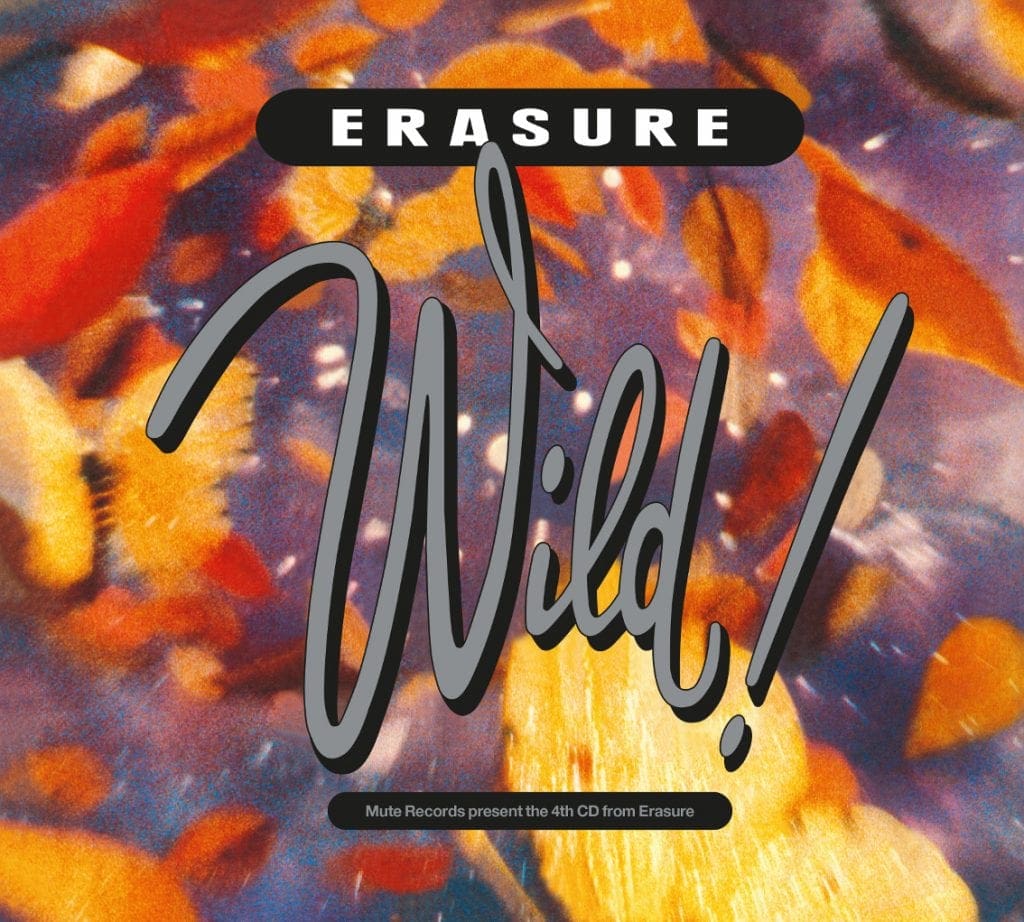

“Erasure – Wild! – 30th Anniversary Deluxe Edition”, is out Friday, 29th March 2019 via BMG / Mute Records.
CD1 Track Listing:
- Piano Song – Instrumental
- Blue Savannah
- Drama!
- How Many Times?
- Star
- La Gloria
- You Surround Me
- Brother and Sister
- 2000 Miles
- Crown Of Thorns
- Piano Song
CD2 Track Listing:
- Sweet, Sweet Baby – The Moo Moo Mix
- Drama! – Richard Norris Mix (unreleased)
- Blue Savannah – Mark Saunders 12″ Mix
- Piano Song – Live at the London Arena (unreleased)
- Runaround On The Underground – Remix
- How Many Times? – Alternative Mix (unreleased)
- Supernature – Daniel Miller & Phil Legg Remix
- Star – Soul Mix
- No GDM. – Unfinished Mix
- Drama! – Act 2
- Brother and Sister – Live at the London Arena (unreleased)
- Dreamlike State – 7″ A Cappella Mix (unreleased)
- You Surround Me – Gareth Jones Mix
- 91 Steps – 6 Pianos Mix
Since you’re here …
… we have a small favour to ask. More people are reading Side-Line Magazine than ever but advertising revenues across the media are falling fast. Unlike many news organisations, we haven’t put up a paywall – we want to keep our journalism as open as we can - and we refuse to add annoying advertising. So you can see why we need to ask for your help.
Side-Line’s independent journalism takes a lot of time, money and hard work to produce. But we do it because we want to push the artists we like and who are equally fighting to survive.
If everyone who reads our reporting, who likes it, helps fund it, our future would be much more secure. For as little as 5 US$, you can support Side-Line Magazine – and it only takes a minute. Thank you.
The donations are safely powered by Paypal.

